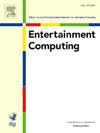Emergence of Player Tactics by expert-guided Machine Learning: An industry tower defence case study
IF 2.4
3区 计算机科学
Q2 COMPUTER SCIENCE, CYBERNETICS
引用次数: 0
Abstract
Modern games generate a large amount of player data that can enhance the game design and development process. Game developers can potentially utilise data science methods to extract information to inform decision making as they strive to improve the user experience and meet business goals. However, this practice is far from widespread due to the specialist expertise needed. Additionally, games are often complex, where the large number of possible player actions creates datasets with a vast state space and high dimensionality. Additionally, these player actions often require context to fully interpret and analyse. In this emerging research field, a further challenge is in ensuring proposed methods are suitable for commercial game development environments, where genres, available data sources and the production process must be considered.
This work presents the results of an industry–academic collaboration, applying the less common player tactic classification method, individual sequence mining, on a fast paced, commercially available tower defence mobile game. It proposes and evaluates a novel pipeline for validating and discovering player tactics to facilitate game balancing. Rather than being applied to data captured from an analytics framework, the analysis was conducted on data captured from network messages generated by game clients. The real-time nature of these network messages creates potential for this data source to have value beyond tactics classification, with opportunities to integrate into AI pipelines for purposes such as automation.
The resulting mixed methods process demonstrates the ability of using this data source to generate insight on player tactics to game development teams, and it being feasible within the commercial game development process. The pipeline can be applied by other games companies seeking to extract value from data that is collected to make better games for their player base.
由专家引导的机器学习产生的玩家战术:一个工业塔防案例研究
现代游戏会产生大量玩家数据,这些数据可以提升游戏设计和开发过程。游戏开发者可以利用数据科学方法提取信息,以便在努力改善用户体验和实现业务目标时为决策提供信息。然而,由于需要专业知识,这种做法远未普及。此外,游戏通常是复杂的,其中大量可能的玩家动作创造了具有巨大状态空间和高维的数据集。此外,这些玩家行动通常需要情境来充分解释和分析。在这个新兴的研究领域,进一步的挑战是确保所提出的方法适用于商业游戏开发环境,其中必须考虑类型,可用数据源和制作过程。这项工作展示了一个产业-学术合作的结果,应用了不太常见的玩家战术分类方法,个人序列挖掘,在一个快节奏的,商业上可用的塔防移动游戏。它提出并评估了一种用于验证和发现玩家策略以促进游戏平衡的新管道。该分析并未应用于从分析框架中获取的数据,而是针对从游戏客户端生成的网络消息中获取的数据进行分析。这些网络消息的实时性为该数据源创造了潜力,使其具有超越战术分类的价值,并有机会集成到人工智能管道中,以实现自动化等目的。由此产生的混合方法过程证明了使用该数据源为游戏开发团队提供玩家策略洞察的能力,并且它在商业游戏开发过程中是可行的。其他游戏公司也可以应用这一渠道,从收集到的数据中提取价值,为他们的玩家基础制作更好的游戏。
本文章由计算机程序翻译,如有差异,请以英文原文为准。
求助全文
约1分钟内获得全文
求助全文
来源期刊

Entertainment Computing
Computer Science-Human-Computer Interaction
CiteScore
5.90
自引率
7.10%
发文量
66
期刊介绍:
Entertainment Computing publishes original, peer-reviewed research articles and serves as a forum for stimulating and disseminating innovative research ideas, emerging technologies, empirical investigations, state-of-the-art methods and tools in all aspects of digital entertainment, new media, entertainment computing, gaming, robotics, toys and applications among researchers, engineers, social scientists, artists and practitioners. Theoretical, technical, empirical, survey articles and case studies are all appropriate to the journal.
 求助内容:
求助内容: 应助结果提醒方式:
应助结果提醒方式:


